Email marketing is one of the most effective ways to reach your target audience and promote your business. It's a cost-effective and efficient way to communicate with your customers, build relationships, and increase sales. However, creating a successful email marketing campaign requires more than just sending out a few promotional emails to your subscribers.
To truly master email marketing, you need to understand the best practices and strategies that will help you stand out in your customers' inboxes. In this ultimate guide, we'll cover everything you need to know to create effective email marketing campaigns, including crafting compelling subject lines, designing visually appealing emails, segmenting your email list, and analyzing your results. Whether you're new to email marketing or looking to take your campaigns to the next level, this guide has everything you need to succeed.
Table of Contents
- 1 #1. Introduction to email marketing and its importance in digital marketing
- 2 #2. Building an effective email marketing strategy
- 3 #3. Creating compelling email content
- 4 #4. Designing responsive and visually appealing email templates
- 5 #5. Growing and maintaining a healthy email list
- 6 #6. Implementing email automation and personalization
- 7 #7. Ensuring email deliverability and avoiding spam filters
- 8 #8. Analyzing email marketing performance and optimizing campaigns
- 9 #9. Nurturing customer relationships through email marketing
- 10 #10. Conclusion and key takeaways for mastering email marketing
- 11 Final Thoughts
#1. Introduction to email marketing and its importance in digital marketing
Email marketing is a powerful tool in the realm of digital marketing. It provides a direct and personal line of communication between businesses and their customers. In today's fast-paced and highly competitive marketplace, email marketing has become an essential strategy for businesses looking to engage, nurture, and retain their customer base.

But what exactly is email marketing? Simply put, it is the process of sending targeted emails to a group of individuals who have voluntarily subscribed to receive updates, promotions, or information from your business. These emails can range from newsletters and product updates to exclusive offers and personalized recommendations.
So, why is email marketing so important in the digital marketing landscape? First and foremost, it allows businesses to reach their customers directly in their inbox, a space that is personal and often checked multiple times a day. Unlike social media platforms or search engine ads, which can easily be overlooked or missed, emails have a higher chance of being seen and engaged with by the recipient.
Moreover, email marketing is highly customizable and versatile. With the right data and segmentation techniques, businesses can create tailored email campaigns that speak directly to the needs and preferences of their target audience. This level of personalization not only enhances the customer experience but also increases the likelihood of conversions and customer loyalty.
Additionally, email marketing provides measurable results and valuable insights. Through analytics and tracking tools, businesses can monitor the open rates, click-through rates, and conversion rates of their email campaigns. This data allows them to refine their strategies, optimize their content, and continuously improve their email marketing efforts.
In this ultimate guide to email marketing best practices, we will delve deeper into the various aspects of this powerful tool. From building an effective email list and crafting compelling content to optimizing deliverability and measuring success, we will equip you with the knowledge and skills to master email marketing and drive meaningful results for your business. So, let's get started on this exciting journey to unlock the full potential of email marketing.
#2. Building an effective email marketing strategy
Building an effective email marketing strategy is crucial for any business looking to engage with their audience and drive conversions. It goes beyond simply sending out promotional messages; it requires thoughtful planning and execution to ensure your emails resonate with your subscribers and deliver the desired results.
The first step in building an effective email marketing strategy is to define your goals. What do you want to achieve with your emails? Is it to increase sales, generate leads, drive website traffic, or build brand loyalty? Having clear objectives will guide your decision-making throughout the process.
Next, you need to understand your target audience. Who are your subscribers? What are their demographics, interests, and pain points? Conducting market research and analyzing data from your existing subscribers can provide valuable insights that will help you tailor your email content to their needs and preferences.
Once you have a solid understanding of your goals and target audience, it's time to create compelling and relevant content. Your emails should provide value to your subscribers, whether it's through informative articles, exclusive promotions, or personalized recommendations. Make sure your content is concise, engaging, and visually appealing to capture your subscribers' attention.
Another important aspect of building an effective email marketing strategy is optimizing your email design and layout. Ensure your emails are mobile-friendly and responsive so that they can be easily viewed on different devices. Use eye-catching visuals, clear call-to-action buttons, and personalize your emails with dynamic content to increase engagement.
Additionally, segmenting your email list based on different criteria such as demographics, purchase history, or engagement levels allows you to send more targeted and personalized emails. This will result in higher open rates, click-through rates, and ultimately, better conversions.
Finally, don't forget to analyze and track the performance of your email campaigns. Monitor key metrics such as open rates, click-through rates, conversion rates, and unsubscribe rates to gauge the effectiveness of your strategy. Use this data to iterate and optimize your future email campaigns for even better results.
Building an effective email marketing strategy takes time and effort, but when done right, it can be a powerful tool to nurture customer relationships, drive sales, and achieve your business goals. So, invest in planning, create valuable content, optimize your design, segment your audience, and continuously analyze and improve your campaigns to master the art of email marketing.
a. Defining goals and objectives
When it comes to email marketing, defining clear goals and objectives is crucial for a successful campaign. Without a clear direction, your efforts may be scattered, and you may not achieve the desired results.
First and foremost, consider what you want to achieve with your email marketing efforts. Are you looking to increase brand awareness, drive traffic to your website, generate leads, or boost sales? Each goal will require a different approach and strategy.
Once you have identified your goals, it's important to set specific and measurable objectives. For instance, if your goal is to increase sales, set a specific target for the number of conversions or revenue generated through your email campaigns.
Additionally, consider the timeline for achieving these objectives. Are you looking for short-term gains or long-term growth? Setting realistic timelines will help guide your email marketing strategy and ensure that your efforts are aligned with your overall business objectives.
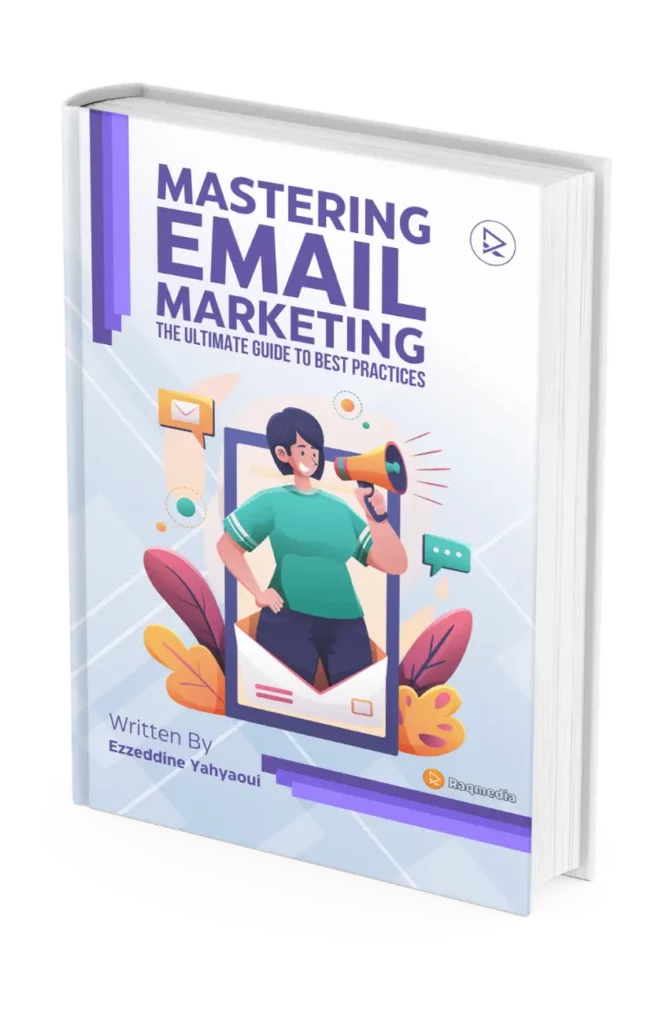
Furthermore, it's essential to consider the needs and preferences of your target audience. What value can you provide to them through your emails? How can you engage them and build a meaningful relationship? Understanding your audience's pain points and interests will allow you to tailor your content to their specific needs, increasing the likelihood of achieving your goals.
Lastly, don't forget to regularly review and analyze your email marketing performance to gauge your progress towards your goals. Keep track of key metrics such as open rates, click-through rates, and conversion rates. This data will provide valuable insights into what is working and what needs improvement, allowing you to optimize your campaigns and achieve better results over time.
By defining clear goals and objectives, you can ensure that your email marketing efforts are focused, strategic, and ultimately effective in driving the desired outcomes for your business.
b. Identifying target audience and segmenting your email list
When it comes to email marketing, one of the most crucial aspects is identifying your target audience and segmenting your email list. This practice allows you to tailor your email campaigns to specific groups of individuals who are more likely to engage with your content and convert into customers.
To start, you need a deep understanding of your target audience. Take the time to conduct market research and gather data on your customers' demographics, preferences, behaviors, and interests. This will help you create buyer personas that represent different segments of your audience.
Segmentation involves dividing your email list into smaller groups based on specific criteria. These criteria can include demographics, geographic location, purchase history, engagement level, or any other relevant factors. By segmenting your list, you can send targeted and personalized emails that resonate with each group.

For example, if you own an online clothing store, you could segment your list based on gender, age, and style preferences. This way, you can send tailored emails showcasing specific clothing items that are more likely to catch the attention of each segment.
Segmentation not only allows for more personalized communication but also improves the overall effectiveness of your email marketing campaigns. It ensures that your messages are relevant and valuable to your subscribers, increasing open rates, click-through rates, and conversions.
Additionally, segmentation enables you to send more targeted offers and promotions. By understanding the specific needs and interests of each segment, you can craft irresistible offers that drive engagement and sales.
Remember, identifying your target audience and segmenting your email list is an ongoing process. Continuously monitor and analyze your subscribers' behavior and preferences to refine your segments further and optimize your email marketing efforts. With the right segmentation strategy in place, you'll see improved results and a stronger connection with your subscribers.
c. Choosing the right email marketing platform
Choosing the right email marketing platform is a crucial step in mastering your email marketing strategy. With so many options available, it's essential to find a platform that aligns with your business needs and goals.
First, consider the features and functionality that are important to you. Do you need advanced segmentation capabilities to target specific groups of subscribers? Are automation workflows a priority for streamlining your email campaigns? Make a list of the must-have features that will help you achieve your email marketing objectives.
Next, consider the scalability of the platform. As your business grows, you'll want an email marketing platform that can accommodate your expanding subscriber base and provide the necessary resources to support your growth. Look for a platform that offers flexible pricing plans and can handle the increasing demands of your email marketing efforts.
Another important factor to consider is the platform's deliverability rate. Ensure that the email marketing platform you choose has a strong reputation for delivering emails to the inbox and not getting caught in spam filters. A high deliverability rate is crucial for ensuring that your messages reach your subscribers and have the intended impact.
Furthermore, consider the platform's user interface and ease of use. You want an email marketing platform that is intuitive and user-friendly, allowing you to create and send professional-looking emails without the need for extensive technical knowledge. Look for drag-and-drop editors, customizable templates, and a straightforward interface that simplifies the email creation process.
Lastly, take into account the level of customer support and resources provided by the email marketing platform. Should you encounter any issues or have questions along the way, having access to responsive customer support can make a significant difference. Additionally, look for platforms that offer educational resources, tutorials, and guides to help you make the most out of the platform's features.
By carefully considering these factors, you can choose an email marketing platform that suits your business needs, helps you automate and optimize your campaigns effectively, and ultimately contributes to the success of your email marketing efforts.
#3. Creating compelling email content
Creating compelling email content is crucial for the success of your email marketing campaigns. Your email content should captivate your subscribers' attention and entice them to take action. Here are some key practices to help you create compelling email content:
- Personalize your emails: Address your subscribers by their names and tailor the content to their preferences and interests. Personalization makes your emails feel more relevant and engaging.
- Craft a catchy subject line: The subject line is the first thing your subscribers see, so make it compelling and intriguing. Use persuasive language and consider adding a sense of urgency or exclusivity to encourage recipients to open your email.
- Use a conversational tone: Write your email content in a conversational tone to establish a connection with your subscribers. Avoid using overly formal or salesy language. Instead, aim for a friendly and genuine tone that resonates with your audience.
- Provide value: Give your subscribers a reason to open and engage with your emails by offering valuable content. Whether it's educational information, exclusive offers, or entertaining stories, ensure that your emails provide something of worth to your readers.
- Keep it concise and scannable: People have limited time and attention spans when it comes to reading emails. Keep your content concise and easy to scan by using short paragraphs, bullet points, and subheadings. Make it easy for your subscribers to quickly grasp the main points of your message.
- Include compelling visuals: Visual elements such as images, videos, or infographics can enhance the appeal of your email content. Use visuals strategically to support your message, make it visually appealing, and increase engagement.
- Call to action: Every email should have a clear call to action (CTA) that directs your subscribers to take the desired action. Make your CTA stand out visually and use persuasive language to encourage click-throughs or conversions.
Remember to test and track the performance of your email content. Analyze open rates, click-through rates, and conversions to refine your approach and optimize your future email campaigns. With compelling email content, you can effectively engage your subscribers and drive desired actions that ultimately boost your email marketing success.
a. Writing engaging subject lines
Writing engaging subject lines is a crucial aspect of mastering email marketing. After all, the subject line serves as the first impression and determines whether your email gets opened or sent straight to the dreaded “delete” folder.
To grab your subscribers' attention, it's essential to craft subject lines that are compelling, intriguing, and relevant. Here are a few strategies to help you write subject lines that drive open rates through the roof:
- Personalization: Addressing your subscribers by their name can create a sense of familiarity and connection. Consider using dynamic tags to automatically insert their first name into the subject line.
- Curiosity: Humans are naturally curious beings, and you can leverage this by creating subject lines that pique their interest. Use intriguing questions, teasing statements, or cliffhangers to make recipients curious enough to open your email.
- Urgency: Creating a sense of urgency can prompt subscribers to take immediate action. Incorporate words like “limited time offer,” “exclusive deal,” or “ending soon” to convey a sense of urgency and encourage them to open your email promptly.
- Personalized Offers: Tailor your subject lines to reflect the individual needs and preferences of your subscribers. By highlighting personalized offers or recommendations, you can increase the chances of engagement and conversion.
- A/B Testing: Don't be afraid to experiment with different subject lines. Conduct A/B tests by sending variations to small segments of your audience and analyzing the open rates. This allows you to identify what resonates best with your subscribers and refine your subject line strategy accordingly.
Remember, the subject line is like a sneak peek into the content of your email. Make it concise, clear, and compelling to entice your subscribers to open and explore further. By mastering the art of writing engaging subject lines, you'll set the stage for successful email marketing campaigns.
b. Crafting personalized and relevant email copies
When it comes to email marketing, crafting personalized and relevant email copies is crucial for success. Gone are the days of generic mass emails that end up in the recipients' spam folders or get deleted without being opened. Today's consumers expect personalized communication that speaks directly to their needs and interests.
To create effective email copies, start by segmenting your email list based on various criteria such as demographics, interests, or past purchase behavior. This allows you to tailor your messages to specific groups of recipients and increase the chances of engagement.

Next, focus on creating compelling subject lines that grab attention and entice subscribers to open your emails. A personalized subject line that includes the recipient's name or references their recent activity with your brand can significantly boost open rates.
Once you have their attention, make sure the content of your emails is relevant to the recipient. Personalize the email content based on the recipient's preferences or past interactions with your brand. For example, if a customer recently purchased a product from a specific category, you can send follow-up emails featuring related products or exclusive offers in that category.
Furthermore, ensure that your email copies are concise, engaging, and easy to read. Use a conversational tone that resonates with your target audience and avoid using jargon or overly promotional language. Keep paragraphs short, utilize bullet points or numbered lists, and use visuals such as images or videos to break up the text and enhance the overall visual appeal.
Lastly, don't forget to include a clear call-to-action (CTA) in your email copies. Whether it's encouraging recipients to make a purchase, sign up for a webinar, or download a free resource, a well-crafted CTA can significantly improve conversion rates. Make sure it stands out visually and provides a clear next step for the recipient to take.
By investing time and effort into crafting personalized and relevant email copies, you can build stronger connections with your subscribers, increase engagement, and ultimately drive conversions and sales for your business.
c. Incorporating visual elements and CTAs
Incorporating visual elements and CTAs (Call to Actions) into your email marketing campaigns is crucial for grabbing your readers' attention and driving desired actions. Visual elements, such as images, videos, and infographics, can enhance the overall aesthetic appeal of your emails and make them more engaging.
When using visual elements in your emails, it's important to strike a balance between visual appeal and loading time. Optimize your images to ensure they load quickly and don't slow down your readers' email experience. Use alt text for your images, so even if they don't load, the recipients can still understand the message you're trying to convey.
Additionally, carefully consider the placement of your CTAs within your emails. They should be strategically placed and stand out from the rest of the content. Use contrasting colors, bold or larger fonts, and eye-catching design elements to make your CTAs easily noticeable. Be clear and concise with your CTA copy, conveying a sense of urgency or value to encourage action.
Consider incorporating personalized and dynamic content in your emails to make them even more relevant and engaging. Personalization can be as simple as including the recipient's name in the subject line or email body, or as advanced as dynamically populating product recommendations based on their browsing or purchase history.
Remember to always test your emails across different devices and email clients to ensure optimal display and functionality. A visually appealing and well-optimized email, combined with strategically placed CTAs, can significantly improve your click-through rates, conversions, and overall success of your email marketing campaigns.
#4. Designing responsive and visually appealing email templates
Designing responsive and visually appealing email templates is a crucial aspect of mastering email marketing. In today's digital age where people access their emails on various devices, it's important to ensure that your email templates are responsive, meaning they adapt and display properly across different screen sizes, whether it's a desktop, smartphone, or tablet.
First and foremost, simplicity is key when it comes to email design. Cluttered and overly complex templates can confuse recipients and make it difficult for them to take the desired action. Keep your design clean, organized, and visually appealing to create a positive user experience.
Using a responsive email template builder can make your life much easier. These tools allow you to create templates that automatically adjust to different screen sizes, ensuring that your emails always look professional and are easy to read, regardless of the device being used. You can use Canva email templates.
When it comes to visuals, choose high-quality images that resonate with your brand and message. Incorporate your brand colors, fonts, and logo to maintain consistency and strengthen brand recognition. Visual elements such as images and graphics should be optimized for fast loading times, as slow-loading emails can frustrate recipients and lead to higher bounce rates.
Another important aspect of email template design is the use of whitespace. Whitespace helps create a sense of balance and allows the content to breathe, making it easier for readers to digest the information. Avoid overcrowding your emails with too much text or images, and use proper formatting techniques such as headings, bullet points, and paragraphs to improve readability.
Don't forget to include a clear and compelling call-to-action (CTA) in your email template. This should be prominently displayed and easily clickable, guiding recipients towards the desired action, whether it's making a purchase, signing up for a webinar, or downloading a resource.
Finally, thoroughly test your email templates across different email clients and devices to ensure they render correctly. This includes checking for any display issues, broken links, or formatting errors that could negatively impact the user experience.
By designing responsive and visually appealing email templates, you can enhance the effectiveness of your email marketing campaigns, engage your audience, and ultimately drive more conversions and sales.
a. Choosing the right template design
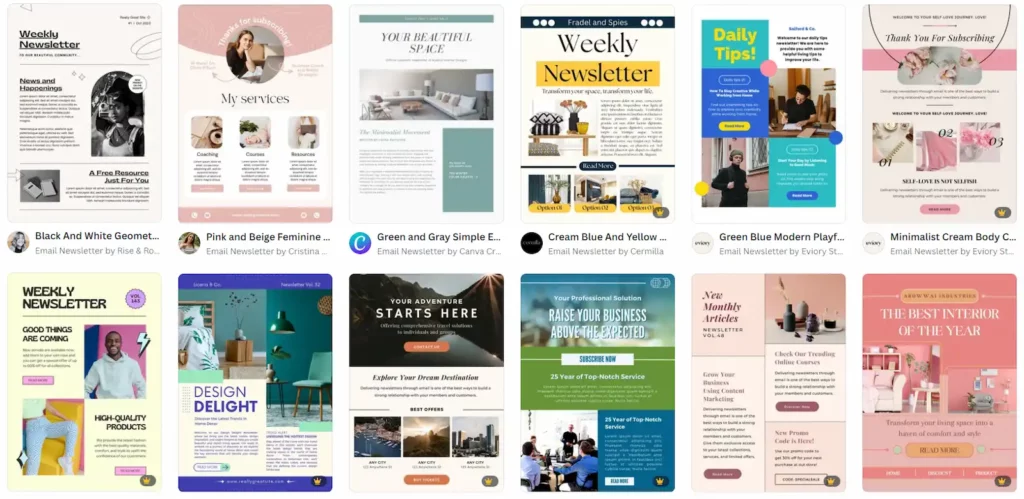
Choosing the right template design for your email marketing campaigns is crucial. Your email template not only sets the visual tone for your brand but also impacts the overall user experience. It can make or break the success of your email marketing efforts.
First and foremost, your template design should align with your brand identity. It should reflect your brand's colors, fonts, and overall aesthetic. Consistency is key in establishing brand recognition and trust with your subscribers. When they open your email, they should instantly recognize it as coming from your brand.
Additionally, your template design should be mobile-responsive. With the majority of emails being opened on mobile devices, it is essential that your emails adapt seamlessly to different screen sizes. A responsive design ensures that your content is easily readable and visually appealing on both desktop and mobile devices.
Consider the layout of your template as well. It should be clean, organized, and easy to navigate. Avoid cluttering your email with too much text or visuals. Instead, focus on concise and compelling content that drives engagement. Utilize white space effectively to create breathing room and draw attention to your key messages.
Another factor to consider is the use of images and graphics. Visuals can enhance the visual appeal of your emails and convey your message more effectively. However, be cautious not to overload your emails with large images that may slow down loading times or get blocked by email clients. Optimize your images for web and ensure they are relevant and impactful.
Lastly, don't forget about the importance of a strong call-to-action (CTA) in your template design. Your CTA should be prominent, visually appealing, and clearly communicate the desired action you want your subscribers to take. Use contrasting colors, compelling copy, and even animation to make your CTA stand out.
In conclusion, choosing the right template design for your email marketing campaigns requires careful consideration of your brand identity, mobile responsiveness, layout, use of visuals, and the inclusion of a strong call-to-action. By investing time and effort into creating a visually appealing and user-friendly template, you can significantly enhance the effectiveness of your email marketing efforts and drive better results.
b. Optimizing for mobile devices
In today's fast-paced digital world, optimizing your email marketing campaigns for mobile devices is no longer just an option—it's a necessity. With the majority of people accessing their emails on smartphones and tablets, failing to optimize your emails for mobile can lead to missed opportunities and a significant drop in engagement.
When it comes to mobile optimization, there are a few key elements to consider. Firstly, ensure that your email templates are responsive and adapt seamlessly to different screen sizes. This means that no matter if your recipients are viewing your email on a small smartphone screen or a larger tablet display, the layout remains intact and the content is easily readable.
Next, pay attention to the font size and formatting of your email. Avoid using small fonts that require zooming in, as this can be frustrating for mobile users. Opt for larger, more legible fonts that enhance readability on smaller screens. Also, break up the text into shorter paragraphs and utilize bullet points or numbered lists to make the content scannable and digestible.
Additionally, consider the loading time of your email. Mobile users are often on the go and have limited patience for slow-loading emails. Optimize your images and graphics to reduce file size, and avoid excessive use of animations or videos that can cause delays. Remember, a quick-loading email can make all the difference in capturing the attention of your mobile audience.
Lastly, don't forget about the importance of a clear and concise call-to-action (CTA). Mobile users are typically looking for quick and effortless actions. Ensure that your CTA buttons are easily tappable with enough spacing around them to prevent accidental clicks. Use action-oriented and compelling language to encourage recipients to take the desired action, whether it's making a purchase, signing up for a newsletter, or downloading an ebook.
By implementing these mobile optimization best practices, you'll be able to deliver a seamless and engaging email experience to your mobile audience. This will not only increase the chances of your emails being opened and read but also drive higher conversions and ultimately contribute to the success of your email marketing campaigns.
c. Ensuring consistent branding and messaging
Consistency is key when it comes to email marketing. Your brand's identity should be reflected in every aspect of your email campaigns – from the design elements to the messaging. This not only helps in establishing brand recognition but also creates a sense of trust and familiarity among your subscribers.
To ensure consistent branding, start by using your brand's colors, logo, and typography in your email templates. This will help maintain a cohesive look and feel across all your communications. Consider creating a branded email signature that includes your logo and contact information.
When it comes to messaging, it's important to maintain a consistent tone and voice throughout your emails. Whether your brand is known for being professional, friendly, or humorous, make sure your emails reflect this personality consistently. This will help your subscribers connect with your brand on a deeper level and strengthen their loyalty.
Another aspect of consistent messaging is aligning your email content with your overall marketing strategy. Each email should have a clear purpose and be in line with your brand's values and goals. Whether you're promoting a new product, sharing valuable content, or offering a special discount, make sure your messaging is consistent with the objectives of your campaign.
In addition to visual and messaging consistency, it's important to send emails at a consistent frequency. This helps your subscribers know what to expect from you and prevents them from feeling overwhelmed or forgotten. Whether you choose to send emails weekly, bi-weekly, or monthly, stick to a schedule that works for your audience and your business.
By ensuring consistent branding and messaging in your email marketing, you'll not only create a cohesive and recognizable brand image but also build trust and loyalty among your subscribers. This will ultimately lead to higher engagement, increased conversions, and a stronger connection with your audience.
#5. Growing and maintaining a healthy email list
Growing and maintaining a healthy email list is a crucial aspect of mastering email marketing. After all, your email list serves as the foundation for your entire email marketing strategy. Without a strong and engaged list of subscribers, your efforts to connect with and convert your audience will fall flat.
To start growing your email list, it's essential to have multiple touchpoints for potential subscribers to opt-in. This could include website sign-up forms, pop-ups, landing pages, social media campaigns, or even offline events. The key is to make the process as seamless and enticing as possible, offering something of value in return for their email address, such as exclusive content, discounts, or a free resource.
Once you've started attracting subscribers, it's crucial to maintain the health of your email list. This involves regularly cleaning and segmenting your list to ensure you're targeting the right audience with the right messaging. Remove inactive subscribers who haven't engaged with your emails for a period of time, as they can drag down your open rates and deliverability. Segmenting your list based on demographics, interests, or past purchase behavior allows you to send more personalized and relevant content, leading to higher engagement and conversions.
Another important aspect of maintaining a healthy email list is ensuring compliance with data protection regulations, such as the General Data Protection Regulation (GDPR) or the CAN-SPAM Act. Obtain explicit consent from subscribers before sending them marketing emails, and provide clear and easy-to-use options for unsubscribing or updating their preferences.
Regularly monitoring your email metrics, such as open rates, click-through rates, and unsubscribe rates, will provide insights into the effectiveness of your email campaigns and the overall health of your list. Use this data to identify areas for improvement and optimize your email marketing strategy accordingly.
In conclusion, growing and maintaining a healthy email list requires a multi-faceted approach that involves creating enticing opt-in opportunities, regularly cleaning and segmenting your list, and complying with data protection regulations. By focusing on these best practices, you'll be well on your way to mastering email marketing and achieving impressive results for your business.
a. Implementing effective lead generation strategies
Implementing effective lead generation strategies is crucial for the success of your email marketing campaigns. Without a steady influx of qualified leads, your email list will stagnate, and your efforts will go to waste.
One of the first steps in generating leads is to create compelling lead magnets. These are valuable resources or incentives that you offer to your website visitors in exchange for their contact information. Lead magnets can be in the form of ebooks, whitepapers, checklists, templates, or exclusive discounts. The key is to provide something that is relevant, valuable, and solves a specific problem for your target audience.
To drive traffic to your lead magnets and capture more leads, optimize your website with prominent call-to-action (CTA) buttons and landing pages. These should clearly communicate the benefits of your lead magnet and provide an easy way for visitors to sign up. Use persuasive copywriting techniques and visually appealing designs to entice visitors to take action.
Another effective lead generation strategy is to leverage social media platforms. Create engaging content that resonates with your target audience and encourages them to click through to your website and sign up for your email list. Use targeted ads to reach a wider audience and promote your lead magnets directly to those who are most likely to be interested.
Additionally, consider partnering with other businesses or influencers in your industry to expand your reach and tap into their existing audience. Collaborate on content or co-host webinars that provide value to both sets of followers and allow for cross-promotion. This can significantly boost your lead generation efforts and help you reach a wider pool of potential customers.
Lastly, don't underestimate the power of referrals. Encourage your current subscribers to refer their friends, family, or colleagues to join your email list. Offer incentives such as exclusive content or discounts for successful referrals. Word-of-mouth marketing can be incredibly effective in generating high-quality leads who are more likely to convert into loyal customers.
By implementing these effective lead generation strategies, you can build a strong and engaged email list filled with prospects who are genuinely interested in your products or services. This will set the foundation for successful email marketing campaigns and ultimately drive more conversions and revenue for your business.
b. Building trust and obtaining permission to email
When it comes to email marketing, building trust and obtaining permission from your audience to email them is crucial. Without their trust and consent, your emails may end up in the spam folder or, worse, result in unsubscribes.
The first step in building trust is to clearly communicate the value that you will provide through your emails. Make it crystal clear what your subscribers can expect from you and how your emails will benefit them. This could be exclusive discounts, helpful tips and advice, industry updates, or any other content that aligns with their interests and needs.
To obtain permission, it's best to use a double opt-in process. This means that after someone subscribes to your email list, they will receive a confirmation email asking them to confirm their subscription. This extra step ensures that the person genuinely wants to receive emails from you and prevents any accidental or malicious sign-ups.
Another important aspect of building trust and obtaining permission is being transparent about your data usage and privacy policies. Assure your subscribers that their information will be kept secure and will not be shared with third parties without their consent. This will give them peace of mind and foster trust in your brand.
Additionally, make it easy for subscribers to manage their preferences and unsubscribe if they choose to do so. Including clear and prominent unsubscribe links in your emails shows that you respect their choice and value their control over their inbox.
Remember, building trust and obtaining permission is an ongoing process. Continuously deliver value through your emails, maintain transparency, and respect your subscribers' preferences. By doing so, you will not only maintain a healthy email list but also cultivate a loyal and engaged audience.
c. Managing subscriber preferences and unsubscribes
Managing subscriber preferences and unsubscribes is a crucial aspect of successful email marketing. While it may seem counterintuitive, providing an easy and seamless way for subscribers to manage their preferences or unsubscribe is actually beneficial for your overall email marketing strategy.
Giving your subscribers control over the types of emails they receive and the frequency of communication allows you to tailor your content to their preferences, leading to higher engagement and increased customer satisfaction. It demonstrates that you respect their choices and value their time, which ultimately strengthens the relationship between your brand and the subscriber.
A best practice is to include a clear and visible link in every email that directs subscribers to a preference center. This preference center should provide options for subscribers to select the types of content they want to receive, such as newsletters, product updates, or promotional offers. Additionally, you should allow them to adjust the frequency of emails, whether they prefer to receive them daily, weekly, or monthly.
Furthermore, it is essential to make the unsubscribe process as simple and hassle-free as possible. While it may be disappointing to see subscribers leave, forcing them to jump through hoops to unsubscribe will only result in frustration and potentially damage your brand's reputation. Including an unsubscribe link in every email is not only a legal requirement but also an ethical practice. Make sure this link is prominent and easily accessible, allowing subscribers to opt-out with just a few clicks.
Regularly reviewing your email list and promptly honoring unsubscribe requests is vital. Failure to do so can lead to spam complaints, which can harm your email deliverability and sender reputation. By promptly removing unsubscribed subscribers from your list, you ensure that your future email campaigns are reaching a genuinely interested and engaged audience.
Overall, managing subscriber preferences and unsubscribes is an essential part of maintaining a healthy and effective email marketing strategy. By empowering your subscribers with control over their email experience and respecting their choices, you can build stronger relationships and maximize the impact of your email campaigns.
#6. Implementing email automation and personalization
Implementing email automation and personalization is a game-changer in the world of email marketing. It allows you to create highly targeted and tailored campaigns that resonate with your audience on a personal level. Gone are the days of sending mass, generic emails that end up in the spam folder or get ignored.
With email automation, you can set up a series of pre-scheduled emails that are triggered based on specific actions or milestones. This could include welcome emails for new subscribers, follow-up emails after a purchase, or even re-engagement emails for inactive subscribers. By automating these processes, you can save time and ensure consistent communication with your audience.
But automation alone is not enough. Personalization is key to truly connecting with your subscribers. By segmenting your email list based on demographics, preferences, or past interactions, you can send targeted content that speaks directly to their needs and interests. For example, if you own an online clothing store, you can send personalized recommendations based on their browsing or purchase history.
Furthermore, personalization goes beyond just addressing your subscribers by their first name. It's about understanding their pain points, offering relevant solutions, and making them feel valued as individuals. By leveraging data and analytics, you can gain insights into their behaviors and preferences, allowing you to craft highly personalized and impactful emails.
Remember, the goal is to make your subscribers feel like you are speaking directly to them, providing solutions and value that are relevant to their lives. By implementing email automation and personalization, you can take your email marketing efforts to new heights, boosting engagement, loyalty, and ultimately, driving conversions.
a. Setting up triggered campaigns based on user behavior
Setting up triggered campaigns based on user behavior is a powerful strategy to engage your email subscribers and drive conversions. By leveraging the data you have on your subscribers, you can personalize their email experience and deliver targeted content that resonates with their interests and preferences.
One popular type of triggered campaign is the welcome series. When a new subscriber joins your email list, you have an opportunity to make a great first impression. Instead of sending a generic welcome email, why not create a series of emails that are triggered to be sent at specific intervals? This allows you to introduce your brand, provide valuable information, and nurture the relationship with your new subscriber over time.
Another effective triggered campaign is the abandoned cart email. If a customer adds items to their cart but doesn't complete the purchase, you can send them a reminder email to encourage them to come back and complete the transaction. You can even sweeten the deal by offering a discount or free shipping to incentivize them to take action.
Segmentation is key when setting up triggered campaigns based on user behavior. By segmenting your email list based on various criteria such as purchase history, browsing behavior, or demographics, you can tailor your messaging to different segments of your audience. This ensures that your emails are relevant and personalized, increasing the likelihood of engagement and conversion.
To set up these triggered campaigns, you'll need an email marketing platform that supports automation and behavioral triggers. Many popular email marketing platforms offer these features, allowing you to easily create and automate your campaigns based on user behavior.
In conclusion, setting up triggered campaigns based on user behavior is a smart strategy to maximize the effectiveness of your email marketing efforts. By delivering personalized and timely content to your subscribers, you can build stronger relationships, drive conversions, and ultimately, boost your business's success.
b. Segmenting and targeting specific customer groups
Segmenting and targeting specific customer groups is a crucial aspect of mastering email marketing. While sending a generic email blast to your entire subscriber list may seem like an easy approach, it often leads to lackluster results. By taking the time to segment your audience and tailor your messages to specific customer groups, you can significantly improve engagement and conversion rates.
One of the first steps in segmenting your audience is to gather relevant data. This can include information such as demographics, purchase history, browsing behavior, and engagement with previous emails. By analyzing this data, you can identify distinct customer groups based on common characteristics or interests.
Once you have identified these segments, you can create targeted email campaigns that are personalized and relevant to each group. For example, if you have a group of customers who frequently purchase beauty products, you can send them emails highlighting new arrivals or exclusive deals on beauty products. Similarly, if you have a segment of customers who have shown interest in a specific category but haven't made a purchase yet, you can send them tailored emails with product recommendations or incentives to encourage conversion.
Segmenting and targeting also allows you to send emails at the right time. For example, if you have customers who have recently made a purchase, you can send them a follow-up email thanking them for their purchase and offering related products or services. On the other hand, if you have customers who have been inactive for a while, you can send them re-engagement emails with exclusive offers or content to bring them back.
By segmenting and targeting specific customer groups, you can ensure that your email campaigns are more effective and resonate with your audience. This level of personalization not only improves engagement but also builds trust and loyalty among your customers. So, take the time to understand your audience, gather relevant data, and create targeted email campaigns that deliver value and drive results.
c. A/B testing and optimizing email campaigns
A/B testing and optimizing email campaigns are essential components of mastering email marketing. With the vast amount of emails flooding people's inboxes every day, it's crucial to ensure that your campaigns stand out and resonate with your audience.
A/B testing, also known as split testing, allows you to compare different elements of your email campaigns to determine which ones are more effective in achieving your goals. These elements can include subject lines, email content, call-to-action buttons, visuals, and more. By creating two variations of the same email and sending them to different segments of your audience, you can analyze the performance metrics and identify which version generates better results.
The key to successful A/B testing is to focus on one element at a time. For example, if you want to test the effectiveness of subject lines, keep the rest of the email content the same and only change the subject line in the two variations. This way, you can accurately measure the impact of that specific element on open rates and click-through rates.
Once you have completed your A/B testing, it's time to optimize your email campaigns based on the insights gained. Take the winning version of each element and incorporate them into your future email communications. Continuously monitoring and refining your campaigns based on data-driven insights will help you improve their performance over time.
Remember, optimization is an ongoing process. Don't settle for one set of winning elements and assume they will always work. Consumer preferences and behaviors can change, so it's important to regularly test and optimize your email campaigns to stay relevant and engaging.
By leveraging A/B testing and optimizing your email campaigns, you can enhance the effectiveness of your email marketing efforts, increase open and click-through rates, and ultimately drive more conversions and revenue for your business.
#7. Ensuring email deliverability and avoiding spam filters
Ensuring email deliverability and avoiding spam filters is crucial for the success of your email marketing campaigns. After all, what good is a well-crafted email if it never reaches your subscribers' inboxes?
To start, it's essential to maintain a clean and engaged email list. Regularly remove inactive or unengaged subscribers to improve your sender reputation. Sending emails to recipients who never open or interact with your messages can negatively impact your deliverability rates. Implementing double opt-in confirmation for new subscribers can also help ensure that your list consists of engaged and interested individuals.
Another key factor in email deliverability is monitoring your email sending practices. Avoid sending large volumes of emails in a short period, as this can raise red flags for spam filters. Instead, stagger your email sends and gradually increase your volume over time. Additionally, use a reputable email service provider (ESP) that adheres to industry standards and has established relationships with internet service providers (ISPs).
Crafting email content that is not flagged as spam is equally important. Avoid using excessive capitalization, exclamation marks, or misleading subject lines that might trigger spam filters. Personalize your emails and ensure that the content is relevant to each subscriber. Segmenting your email list based on demographics, preferences, or previous interactions can help you send targeted and meaningful content.
Furthermore, make sure to include a clear and easy-to-use unsubscribe option in every email. Honoring unsubscribe requests promptly is not only a legal requirement but also crucial for maintaining a positive sender reputation. By respecting your subscribers' preferences, you build trust and credibility, which can lead to better deliverability rates.
Regularly monitoring your email deliverability metrics is essential in identifying and addressing any issues. Pay attention to bounce rates, open rates, click-through rates, and spam complaints. Analyzing these metrics can help you identify potential deliverability problems and take corrective actions promptly.
By following these best practices, you can improve your email deliverability rates, avoid being marked as spam, and ensure that your valuable content reaches your subscribers' inboxes consistently. Remember, a well-executed email marketing strategy can be a powerful tool for engaging and retaining your audience.
a. Following email deliverability best practices
Following email deliverability best practices is crucial to ensure that your carefully crafted emails actually reach your subscribers' inboxes. After all, what good is a well-crafted email if it ends up in the dreaded spam folder?
To optimize your email deliverability, there are several best practices you need to keep in mind. Firstly, maintaining a clean and engaged subscriber list is key. Regularly clean out inactive or bounced email addresses to maintain a high-quality list. This will not only improve your deliverability but also increase engagement rates.
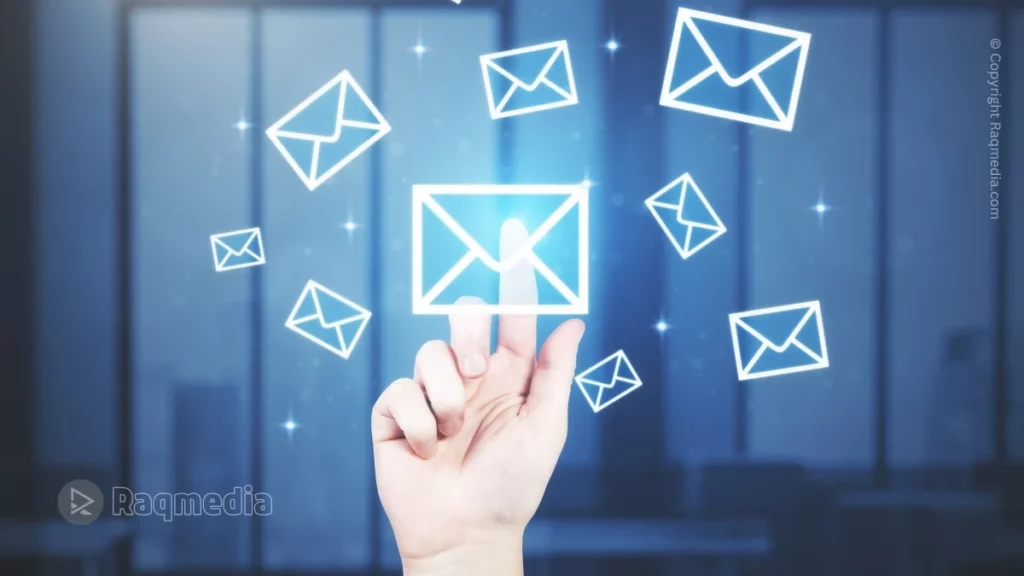
Another important aspect is to authenticate your emails. Implement DKIM (DomainKeys Identified Mail) and SPF (Sender Policy Framework) to verify your domain and authenticate your emails. This helps establish your credibility as a sender and reduces the chances of your emails being marked as spam.
It's also crucial to pay attention to your email content and structure. Avoid using spam trigger words or phrases that could raise red flags with spam filters. Craft personalized and relevant content that resonates with your audience, and always include a clear and prominent unsubscribe link to comply with anti-spam laws.
Furthermore, regularly monitor your email deliverability metrics. Track your open rates, click-through rates, and bounce rates to identify any potential issues. If you notice a decline in deliverability, investigate the root causes and take appropriate actions to resolve them.
Lastly, maintaining a positive sender reputation is vital. Ensure that you consistently send emails from a reputable IP address and domain. Avoid engaging in spammy practices, such as purchasing email lists or sending unsolicited emails. By adhering to these practices, you can build and maintain a strong sender reputation, leading to improved email deliverability.
Remember, following email deliverability best practices is an ongoing effort. Stay up to date with industry changes, monitor your metrics, and adapt your strategies accordingly. By doing so, you can ensure that your emails consistently land in your subscribers' inboxes, maximizing the impact of your email marketing efforts.
b. Ensuring a clean and engaged email list
When it comes to email marketing, the quality of your email list is crucial. It's not just about the number of subscribers you have, but also the engagement level of those subscribers. A clean and engaged email list can make all the difference in the success of your email marketing campaigns.
First and foremost, regularly clean your email list by removing inactive or unengaged subscribers. These are the individuals who haven't opened or clicked on your emails for a significant period of time. Keeping them on your list not only skews your metrics but can also negatively impact your deliverability rates. By regularly purging these inactive subscribers, you ensure that your list consists of people who are genuinely interested in hearing from you.
Another important aspect of maintaining a clean email list is to regularly update and verify your subscribers' email addresses. Over time, people might change their email addresses or abandon old accounts. Sending emails to these outdated or non-existent addresses not only wastes your resources but can also harm your sender reputation. Utilize email verification tools or send re-engagement campaigns to confirm the validity of your subscribers' email addresses.
To keep your email list engaged, it's crucial to deliver relevant and valuable content. Segment your subscribers based on their interests, preferences, or purchasing behavior, and tailor your email campaigns accordingly. Personalization goes a long way in capturing the attention and interest of your subscribers. Additionally, regularly monitor your email engagement metrics, such as open rates, click-through rates, and conversions, and adjust your strategies based on the insights gained.
Lastly, make it easy for subscribers to manage their preferences or unsubscribe from your emails if they choose to do so. Providing clear and prominent options for opt-outs not only ensures compliance with email marketing regulations but also enhances the trust and credibility of your brand.
By focusing on maintaining a clean and engaged email list, you set the foundation for successful email marketing campaigns. It allows you to deliver targeted content to interested recipients, improve your deliverability rates, and ultimately drive better results for your business.
c. Monitoring email metrics and reputation
Monitoring email metrics and reputation is a crucial step in mastering email marketing. It allows you to gain valuable insights into the effectiveness of your email campaigns and ensure that your emails are reaching your target audience successfully. By keeping a close eye on these metrics, you can identify areas of improvement and make data-driven decisions to optimize your email marketing strategy.
One key metric to monitor is the open rate, which measures the percentage of recipients who open your emails. A low open rate may indicate that your subject lines are not engaging enough or that your emails are being sent at the wrong time. By analyzing this metric, you can experiment with different subject lines, test different send times, and ultimately improve your open rates.
Click-through rate is another important metric to monitor. It measures the percentage of recipients who click on links within your emails. A high click-through rate indicates that your content is engaging and driving action. By analyzing this metric, you can identify which types of content resonate the most with your audience and optimize future campaigns accordingly.
Furthermore, monitoring your email deliverability and sender reputation is essential. Email service providers (ESPs) assign a sender score or reputation to each sender based on factors like email engagement, spam complaints, and bounces. A poor sender reputation can result in your emails being sent to the spam folder or blocked altogether. By regularly monitoring your sender reputation and taking necessary steps to improve it, such as cleaning your email list and avoiding spam triggers, you can ensure that your emails reach the intended recipients' inbox.
In addition to these metrics, monitoring unsubscribe rates, spam complaints, and bounce rates is crucial for maintaining a healthy email list and reputation. Unsubscribe rates can provide insights into the relevancy and frequency of your emails, while spam complaints and bounce rates can indicate potential deliverability issues or the need for list hygiene.
Overall, monitoring email metrics and reputation allows you to continuously improve your email marketing strategy, deliver relevant content to your audience, and maintain a positive sender reputation. By leveraging these insights, you can optimize your campaigns and achieve better results in terms of engagement and conversions.
#8. Analyzing email marketing performance and optimizing campaigns
Analyzing the performance of your email marketing campaigns is a crucial step in optimizing your strategy and maximizing your results. Without proper analysis, you may be missing out on valuable insights that can help you improve your campaigns and achieve higher conversion rates.
Start by tracking key metrics such as open rates, click-through rates, and conversion rates. These metrics will give you a clear picture of how well your emails are performing and where there may be room for improvement. Analyzing these metrics over time will also allow you to identify trends and patterns, helping you make data-driven decisions for future campaigns.
In addition to these basic metrics, it's important to dig deeper and segment your email performance data. By segmenting your audience based on factors like demographics, purchase history, or engagement levels, you can gain a deeper understanding of how different segments respond to your emails. This will enable you to tailor your content and offers to better resonate with each segment, ultimately driving higher engagement and conversion rates.
Another valuable analysis technique is A/B testing. By testing different elements of your emails, such as subject lines, call-to-action buttons, or email layouts, you can determine what resonates best with your audience and optimize your campaigns accordingly. A/B testing allows you to make data-driven decisions and continuously improve your email marketing performance over time.
It's also important to regularly clean and manage your email list. Analyzing metrics like bounce rates, unsubscribe rates, and spam complaints will help you identify inactive or unengaged subscribers. Removing these subscribers from your list will not only improve your deliverability and open rates but also ensure that you're targeting a more engaged and receptive audience.
Lastly, don't forget to leverage the power of email marketing analytics tools. Many email service providers offer robust analytics and reporting features that can provide you with valuable insights and automate the analysis process. These tools can save you time and help you gain a deeper understanding of your email marketing performance.
In conclusion, analyzing email marketing performance and optimizing your campaigns is an ongoing process that requires careful monitoring and analysis of key metrics. By leveraging segmentation, A/B testing, and email analytics tools, you can make data-driven decisions and continually optimize your email marketing strategy to achieve better results and drive higher conversions.
a. Tracking key email marketing metrics
Tracking key email marketing metrics is essential for successful email campaigns. These metrics provide valuable insights into the effectiveness of your email marketing efforts and help you make informed decisions to optimize your campaigns.
One of the most important metrics to track is the open rate. This metric tells you the percentage of recipients who opened your email. A high open rate indicates that your subject line and preview text were compelling, and your subscribers found value in your content. On the other hand, a low open rate may indicate that your subject line needs improvement or that your email is not reaching the right audience.
Click-through rate (CTR) is another crucial metric to measure. It tells you the percentage of recipients who clicked on a link within your email. A high CTR indicates that your email content and call-to-action were engaging and successfully drove recipients to take action. By tracking the CTR, you can identify which links or content are performing well and which ones need improvement.
Conversion rate is a metric that measures the percentage of recipients who completed the desired action, such as making a purchase or filling out a form, after clicking on a link in your email. This metric helps you gauge the effectiveness of your email in driving conversions and can guide you in optimizing your email content and calls-to-action to improve conversion rates.
Additionally, it's important to track metrics like bounce rate, which measures the percentage of emails that were not delivered successfully, and unsubscribe rate, which indicates the number of subscribers who opted out of receiving your emails. These metrics can provide insights into the quality of your email list and the relevance of your content to your subscribers.
By tracking these key email marketing metrics, you can gain a deeper understanding of your audience's engagement with your emails and make data-driven decisions to improve your campaigns. Regularly analyzing and monitoring these metrics will allow you to identify trends, spot areas for improvement, and ultimately optimize your email marketing strategy for better results.
b. Analyzing conversion rates and engagement
Analyzing conversion rates and engagement is a crucial aspect of mastering email marketing. As a marketer, it's important to understand how effective your email campaigns are in driving conversions and engaging your audience.
Conversion rates refer to the percentage of recipients who take the desired action after receiving your email, whether it's making a purchase, signing up for a webinar, or downloading a resource. By tracking and analyzing these rates, you can gain valuable insights into the effectiveness of your campaigns and identify areas for improvement.
One of the key metrics to monitor is the click-through rate (CTR), which measures the percentage of recipients who clicked on a link within your email. A high CTR indicates that your email content and call-to-action are compelling enough to drive engagement and encourage recipients to take the next step.
Engagement, on the other hand, encompasses a broader set of metrics, including open rates, bounce rates, and unsubscribe rates. Open rates indicate how many recipients opened your email, while bounce rates measure the number of undelivered emails. Unsubscribe rates show the percentage of recipients who opted out of receiving further emails from your brand.
Analyzing these metrics can provide valuable insights into the effectiveness of your email campaigns and help you make data-driven decisions to optimize your future efforts. For example, if you notice a low open rate, it may be an indication that your subject lines are not engaging enough or that your emails are not reaching the right audience.
To conduct a comprehensive analysis, consider using email marketing tools that provide detailed reports and analytics. These tools can help you track key metrics, segment your audience, and identify trends over time. By regularly reviewing and analyzing conversion rates and engagement metrics, you can refine your email marketing strategy and ensure that your campaigns are driving the desired results.
Remember, email marketing is an iterative process, and continuous analysis and optimization are essential for success. Stay vigilant, experiment with different approaches, and use the insights gained from analyzing conversion rates and engagement to refine your email marketing strategy and achieve better results.
c. Making data-driven decisions and continuous improvements
Making data-driven decisions and continuous improvements is a crucial aspect of mastering email marketing. In today's fast-paced digital landscape, it is not enough to simply send out emails and hope for the best. To truly excel in email marketing, you must constantly analyze data and make informed decisions based on the insights gained.
One of the first steps in making data-driven decisions is to track and measure key performance indicators (KPIs) related to your email campaigns. This includes metrics such as open rates, click-through rates, conversion rates, and unsubscribe rates. By regularly monitoring these KPIs, you can identify trends, patterns, and areas for improvement.
Additionally, segmenting your email list based on various criteria, such as demographics, interests, or past purchase behavior, can provide valuable insights and allow you to tailor your email content to specific audience segments. This personalization can greatly enhance engagement and conversion rates.
A/B testing is another powerful tool in your arsenal for data-driven decision-making. By testing different elements of your emails, such as subject lines, call-to-action buttons, or email designs, you can determine what resonates best with your audience and optimize your campaigns accordingly. This iterative process of testing and refining ensures that you are continuously improving your email marketing efforts.
Furthermore, leveraging automation and email marketing software can streamline your processes and provide valuable data insights. These tools often offer advanced analytics and reporting features, allowing you to track the success of your campaigns in real-time and make data-backed decisions on the go.
In conclusion, mastering email marketing requires a commitment to data-driven decision-making and continuous improvements. By closely monitoring key metrics, segmenting your audience, conducting A/B testing, and utilizing automation tools, you can optimize your email campaigns for maximum impact and drive exceptional results for your business.
#9. Nurturing customer relationships through email marketing
Email marketing is a powerful tool for nurturing customer relationships and driving long-term success for your business. It allows you to stay connected with your audience, provide value, and build trust over time. But to truly master email marketing and maximize its potential, there are a few best practices you should keep in mind.
First and foremost, personalization is key. Gone are the days of generic, mass emails. Today's consumers expect personalized content that speaks directly to their needs and interests. Segment your email list based on demographics, past purchases, or engagement levels, and tailor your messaging accordingly. Use merge tags to include the recipient's name or other relevant information, making them feel valued and recognized.
Another important aspect of nurturing customer relationships through email marketing is providing valuable and relevant content. Your emails should offer more than just promotional messages; they should provide helpful tips, industry insights, or exclusive offers that your subscribers can't find anywhere else. By consistently delivering valuable content, you'll establish yourself as an authority in your industry and keep your audience engaged.
Automation is a game-changer when it comes to email marketing. Set up automated email sequences to welcome new subscribers, follow up on purchases, or re-engage inactive subscribers. This allows you to deliver targeted messages at the right time, without manual effort. Utilize triggered emails based on specific actions or behaviors, such as cart abandonment or website browsing history, to provide personalized recommendations and encourage conversions.
Building a sense of community and fostering two-way communication is also crucial for nurturing customer relationships. Encourage your subscribers to engage with your emails by asking for feedback, opinions, or encouraging them to share their success stories. Respond to their inquiries promptly and provide excellent customer service. By creating a sense of connection and actively listening to your audience, you'll build trust and loyalty.
Lastly, always track and analyze your email marketing efforts. Pay attention to open rates, click-through rates, and conversion rates to measure the effectiveness of your campaigns. Use A/B testing to optimize subject lines, email designs, or call-to-action buttons for better results. By continuously monitoring and optimizing your email marketing strategies, you can refine your approach and achieve even greater success.
In brief, nurturing customer relationships through email marketing requires personalization, valuable content, automation, community building, and data-driven optimization. By implementing these best practices, you can create meaningful connections with your audience, drive customer loyalty, and ultimately boost your business's success.
a. Sending personalized and relevant content
When it comes to email marketing, sending personalized and relevant content is key to capturing your audience's attention and driving engagement. Gone are the days of generic mass emails that end up in the spam folder or get deleted without a second thought. Today, consumers expect a more personalized experience, and it's up to you to deliver.
One effective way to achieve this is by segmenting your email list based on various criteria such as demographics, purchase history, or engagement level. By dividing your audience into smaller, more targeted groups, you can tailor your content to their specific interests and needs. For example, if you have an online clothing store, you can send different emails to male and female subscribers, showcasing the latest trends and offering exclusive discounts on items they are more likely to be interested in.
Furthermore, it's crucial to make use of automation tools to send automated emails triggered by specific actions or events. This allows you to deliver timely and relevant content to your subscribers. For instance, if a customer abandons their shopping cart, you can set up an automated email to be sent after a certain period, reminding them of the items left behind and offering an incentive to complete the purchase.
Personalization goes beyond just addressing your subscribers by their first names. It involves understanding their preferences and behavior to deliver content that resonates with them. Use data analytics to gain insights into your audience's interests, purchase patterns, and browsing history. Armed with this information, you can craft highly targeted emails that speak directly to their needs, making them feel valued and understood.
Remember, though, that personalization is not a one-size-fits-all approach. It requires continuous testing, monitoring, and refining to ensure you're delivering the most effective content to each segment of your audience. Stay on top of industry trends, experiment with different strategies, and always keep an eye on your email metrics to gauge the success of your personalized campaigns.
By sending personalized and relevant content, you can establish a deeper connection with your subscribers, increase open and click-through rates, and ultimately boost your email marketing success. So invest the time and effort into mastering the art of personalization, and watch your email campaigns thrive.
b. Implementing effective email drip campaigns
Implementing effective email drip campaigns can be a game-changer for your email marketing strategy. The concept of drip campaigns is to send a series of targeted and automated emails to your subscribers over a specific period of time. This allows you to nurture leads and guide them through the customer journey, ultimately increasing engagement and conversions.
To create a successful email drip campaign, start by defining your goals. Are you aiming to onboard new customers, upsell existing ones, or re-engage inactive subscribers? Once you have a clear objective in mind, it's time to plan the content and timing of your emails.
Segmentation is key when it comes to drip campaigns. Divide your subscriber list into smaller groups based on their interests, behaviors, or demographics. This allows you to send more personalized and relevant content, increasing the chances of engagement.
Craft compelling and attention-grabbing subject lines that entice your subscribers to open your emails. Remember, the subject line is the first impression, so make it count! Once you have their attention, deliver valuable and useful content that aligns with their needs and interests. This can include educational resources, exclusive offers, or personalized recommendations.
Timing is crucial in drip campaigns. Space out your emails appropriately to avoid overwhelming your subscribers or being forgotten. Consider the frequency and intervals between each email, ensuring that you maintain a consistent presence without being too intrusive.
Don't forget to include clear and compelling call-to-action (CTA) buttons or links in your emails. These should guide your subscribers to take the desired action, such as making a purchase, signing up for a webinar, or downloading an e-book. Make your CTAs stand out visually and use persuasive language to encourage click-through rates.
Lastly, monitor and analyze the performance of your drip campaigns. Track open rates, click-through rates, and conversion rates to understand what's working and what can be improved. Use this data to optimize your future campaigns and continually refine your email marketing strategy.
By implementing effective email drip campaigns, you can engage your subscribers at every stage of their customer journey, nurture leads, and ultimately drive conversions. With careful planning, segmentation, compelling content, and strategic timing, you'll be well on your way to mastering email marketing and achieving your business goals.
c. Using email to drive customer loyalty and retention
Using email to drive customer loyalty and retention is a crucial aspect of any successful email marketing strategy. While acquiring new customers is important, retaining existing ones is equally, if not more, valuable for the long-term growth of your business. By leveraging the power of email, you can create personalized and engaging experiences that keep your customers coming back for more.
One effective way to drive customer loyalty through email is by implementing a robust customer loyalty program. By offering exclusive discounts, rewards, or special promotions, you can incentivize your customers to continue engaging with your brand. Sending targeted emails to your loyalty program members, highlighting their progress or offering personalized rewards based on their purchase history, can make them feel valued and appreciated.
Furthermore, utilizing email to nurture customer relationships is essential for fostering loyalty and retention. Sending regular newsletters or updates that provide valuable content, such as industry insights, expert tips, or product recommendations, can position your brand as a trusted source of information and build a sense of community among your customers.
Segmentation is another key strategy to drive customer loyalty and retention through email marketing. By dividing your customer base into different segments based on their preferences, behaviors, or purchase history, you can send highly targeted and relevant emails that resonate with each segment. Personalizing the content, promotions, and recommendations in your emails based on these segments can significantly improve customer engagement and loyalty.
Moreover, leveraging automation in your email marketing efforts can streamline and enhance your customer retention efforts. Set up automated workflows triggered by specific customer actions or milestones, such as a welcome series for new customers or a re-engagement campaign for inactive ones. By delivering timely and personalized messages to your customers at the right moment, you can rekindle their interest, drive repeat purchases, and ultimately boost customer loyalty.
In summary, using email to drive customer loyalty and retention requires a strategic and customer-centric approach. By implementing a customer loyalty program, nurturing customer relationships, segmenting your audience, and leveraging automation, you can create impactful email campaigns that keep your customers engaged, satisfied, and loyal to your brand.
#10. Conclusion and key takeaways for mastering email marketing
In conclusion, mastering email marketing requires a strategic approach and adherence to best practices. By following the key takeaways outlined in this guide, you can significantly improve the effectiveness of your email marketing campaigns and drive better results for your business.
First and foremost, always prioritize building a quality email list. Focus on growing your subscriber base organically by offering valuable incentives and providing clear opt-in opportunities. Remember, quality trumps quantity when it comes to email subscribers.
Segmentation is another crucial aspect of successful email marketing. By segmenting your audience based on their preferences, behaviors, or demographics, you can deliver highly targeted and personalized content that resonates with your subscribers. This not only increases engagement but also helps you achieve higher conversion rates.
Crafting compelling email content is vital for capturing your readers' attention and driving action. Make sure your subject lines are attention-grabbing and concise, and your email copy is clear, concise, and relevant. Utilize persuasive call-to-action buttons and optimize your emails for mobile devices to ensure a seamless user experience.
Automation is a powerful tool that can save you time and maximize your email marketing efforts. From welcome emails to drip campaigns and abandoned cart reminders, automating key touchpoints throughout the customer journey can nurture leads, increase customer loyalty, and ultimately drive more conversions.
Regularly tracking and analyzing your email marketing metrics is essential for continuous improvement. Pay attention to open rates, click-through rates, conversion rates, and unsubscribe rates to gain insights into what's working and what needs improvement. Use these insights to refine your strategies and optimize future campaigns.
Lastly, never underestimate the importance of testing and experimentation. A/B testing different elements of your emails, such as subject lines, content, CTAs, and visuals, allows you to identify what resonates best with your audience and continuously optimize your campaigns for better results.
By implementing these key takeaways and continuously refining your approach, you can become a master of email marketing. Remember, building strong relationships with your subscribers, delivering value, and respecting their preferences are the pillars of successful email marketing. So, take the time to invest in this powerful marketing channel and watch your business thrive.
Final Thoughts
We hope you found our ultimate guide to best practices in email marketing helpful and informative. Email marketing is a powerful tool for businesses of all sizes, and mastering it can greatly enhance your marketing efforts. By following the tips and strategies outlined in this blog post, you can create engaging and effective email campaigns that drive results. So, go ahead and put these best practices into action, and watch your email marketing efforts reach new heights. Remember, the inbox is waiting for your next successful campaign!








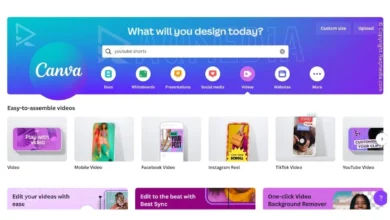
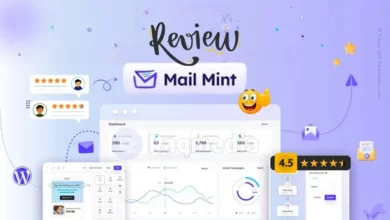
💌🚀 Discover the Ultimate Guide to Mastering Email Marketing! Boost your campaigns with hidden strategies for skyrocketing conversions!
🚀📧🔗 Read more at: https://lnkd.in/d9y2ugSk
👍 Don’t miss out! Follow and like @raqmedia for more valuable insights! 👍
.
📌 #raqmedia #EmailMarketing #DigitalMarketing #ConversionRates #MarketingTips #BusinessSuccess #ROI